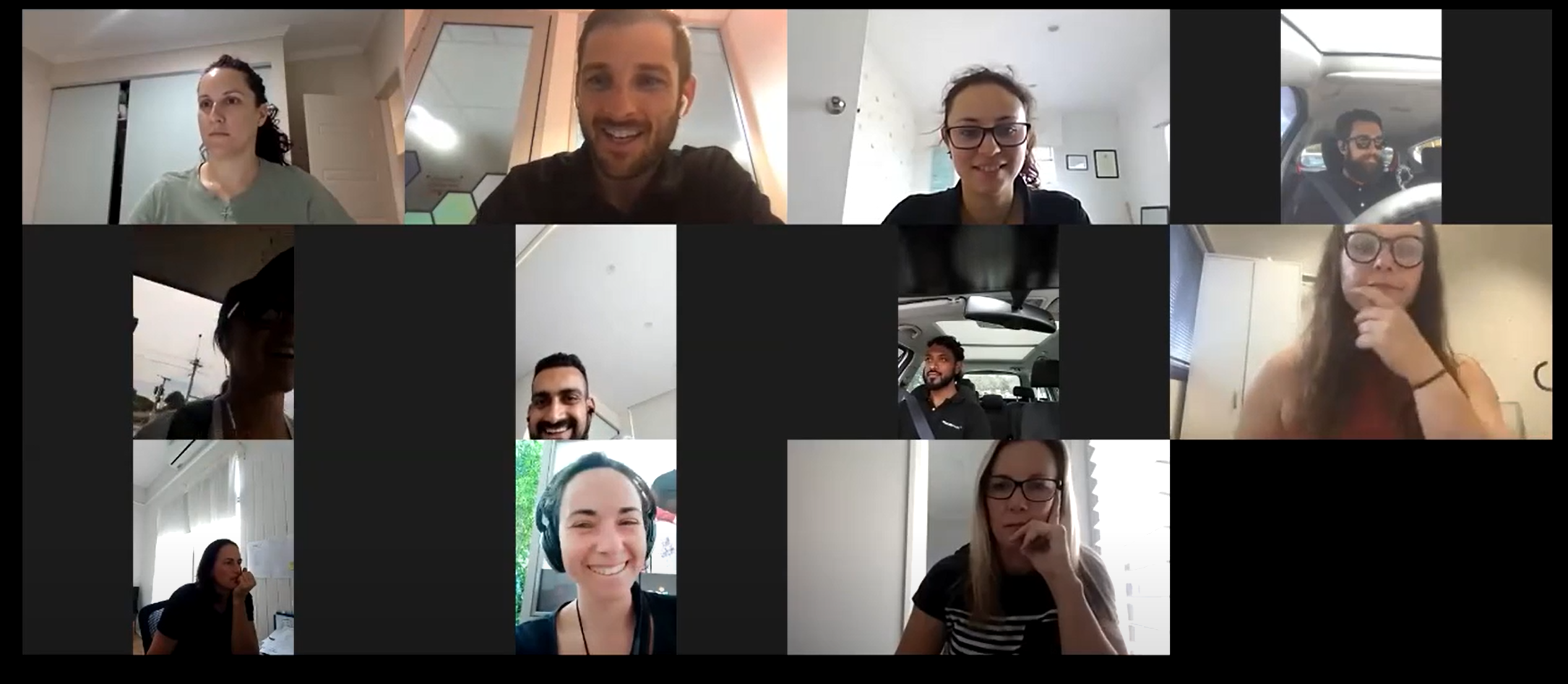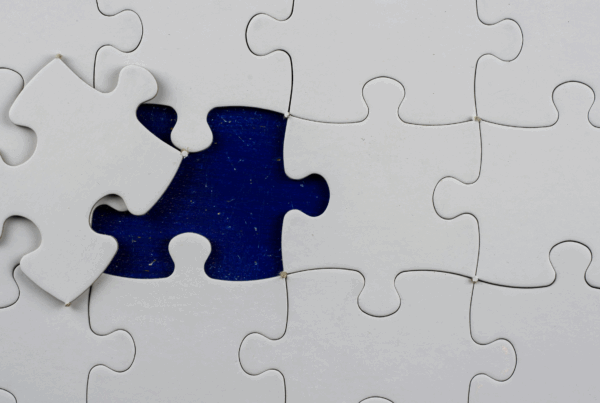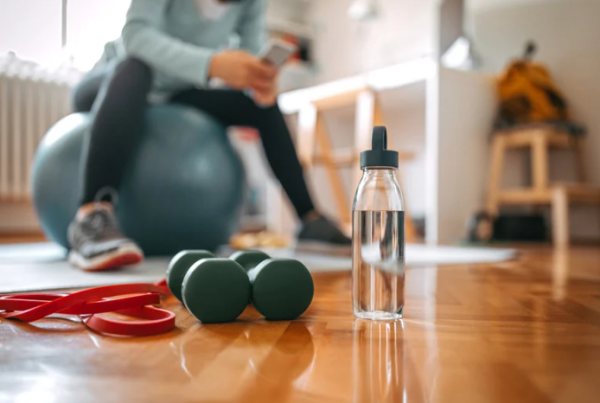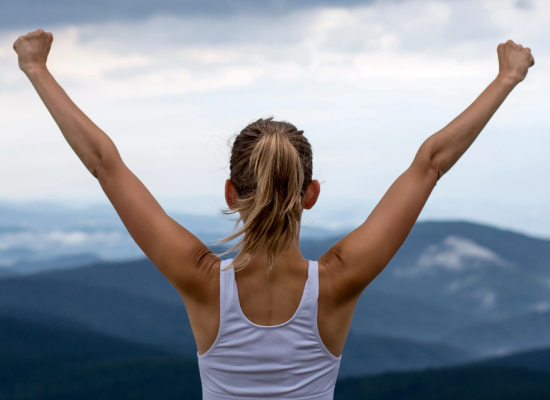Even the exercise pros can find motivation fickle sometimes.
Fortunately for us though, we’re trained in behaviour change support, motivational interviewing and coaching others, so we know the tips to give ourselves.
Goal setting is a big part of finding your motivation. It’s essential to connect with Your Why.
But goal setting is more than just visualising what you want. You need to plan the how.
The How will always require some sort of behaviour change, and habit building.
Everyone has their own little tricks, so let’s find out from the Exercise Physiologists themselves.
Carmyn Barnes – Christchurch, NZ

I basically haven’t felt like it every day during this lockdown!
But I think of how good it felt to be fit and strong before isolation when I had more external motivators (squad swimming, group gym training, etc) and how badly I want to maintain that fitness.
I also think of a time when I was really unfit and how terrible it made me feel about myself, and I don’t want to get to that point again, so I train.
I make exercise a habit, my day isn’t complete without it.
Mae Heard – Exercise Physiologist, Auckland, NZ

When I feel like I don’t want to exercise, I try do something different to what I was planning originally. For example, if I don’t feel like running I’ll do some yoga, or if I don’t feel like CrossFit ill go for a walk instead.
To help others I always try to remind others about how good you feel after you have done some exercise and try to harvest that feeling to use as motivation for when you don’t feel like it.
It also helps to incorporate some exercises into your daily routine to make you feel less guilty about not doing any exercise that day, for example, doing a squat every time you pick up an item of clothing to put up on the washing line, or doing some balancing or calf raises while brushing your teeth, lunges while waiting for your bath to fill up!
Tessa Nielsen – Exercise Physiologist, Palmerston North, NZ

When I don’t feel like exercising I‘ll commit to just doing 10-minutes. Most of the time it turns into a lot more!
I’ll put some headphones on and crank workout songs. Or I’ll rope a buddy (willing or otherwise) into doing something with me.
Yolanda Van Vugt – Auckland, NZ

I always try to remind myself of how much better I will feel if I do my exercise versus if I don’t do it.
If this isn’t enough motivation, then I try to find a more easy alternative (i.e. a walk versus a run, short-run versus long run, stretching versus gym session) so that I am still moving my body in some way and keeping in the habit of setting aside time for exercise.
Often just getting started is the hardest part, and once you start then it gets easier to just keep going!
Lauren Teitzel – Exercise Physiologist, Wellington, NZ

I also like to remind myself of how good I feel after exercising!
But when it’s hard I don’t put pressure on myself to complete what I have planned, if I don’t feel like it. Instead, I will typically break it down into something a bit smaller (that seems more achievable), and go from there.
I often find once I get started, I am able to do a lot more than I thought.
If I’m really not feeling it at all, I will just get outside and go for a walk.
Shara Kinney – Exercise Physiologist, South-west Sydney

Knowing my goals and reminding myself of what I want to achieve helps keep me stay accountable to myself!
I also know that even after a 20-minute workout I will feel better and knowing this is the best way for me to get into it.
If need be, putting a little high-intensity video workout found on youtube or a fitness app so I can just zone out and follow that. I’m loving the Centr app right now.
Chantelle Wardini – Exercise Physiologist & Dietician, NorWest Sydney, NSW

I schedule exercise in with a friend, another EP or another person at the same time each week so that I have the accountability to push me until it becomes a habit!
Hussein Taoube – Exercise Physiologist, Eastern Sydney

Anirudh Parthiban – NSW Team Leader and Exercise Physiologist, Norwest Sydney, NSW

I don’t often feel like exercising, especially since becoming a dad, but I know how important it is for me despite finding it increasingly harder to fit into my day. So I do the following to squeeze in all the activity I can:
- I get myself involved in client sessions where appropriate. At present, I have an IP client referred for severe depression, he also busted his knee. His goal was to ride 50km on his bike so I go for rides with him during sessions. So here some riding sessions are appropriate, both relevant to his personal goals which increases engagement, and relevant to his condition!
- When demonstrating an exercise to a client sometimes I complete a full set to exhaustion just to chuck in a few reps, or join in with them alternating sets while they rest.
This isn’t appropriate for all clients! Clients this works for include clients who are actually more motivated with someone exercising with them, or feel less awkward when there don’t have me there standing and “watching.” It also helps the kinesthetic-visual learners who like to practice while also watching, and this is actually needed for clients newer to exercise over video conference, where they need the time and repetition to learn! - When life gets in the way (which it always does) and I can’t set aside time to do a set workout, I like make normally easy tasks harder, for example instead of watering the garden with a hose, I use buckets and watering cans so I’m always walking back and forth carrying up to 20kg. I time myself so I’m actually getting my heart rate up. When I clean the house I sometimes pop my daughter in a baby carrier so I can’t stoop to pick stuff up, I have to squat, lunge or do “good mornings”.
- Rather than letting ‘looking after my kids’ be an excuse for not exercising, I get them involved in my work out by popping them in a toddler seat while riding a bike, going for a jog with the pram, or doing yoga and stretching with them. My toddler luckily loves yoga and always puts me to shame. All in all I find excuses come really easily for me, so I have to trick myself into staying active.
Frith Maunder – Exercise Physiologist, Toowoomba, QLD
 I have to have goals to keep myself going – weekly goals and medium-term goals with a reward when achieved.
I have to have goals to keep myself going – weekly goals and medium-term goals with a reward when achieved.
When I’m not feeling like exercising I remind myself back to the goals.
I’ve also started getting my kids into resistance training (since COVID) so I have training buddies to get me through.
Biara Webster – Exercise Physiologist and Content Manager
Know your Why, When, How and Who.
Why
I have a set amount of days I have to exercise per week, because if I don’t I will feel less human and more grumpy zombie, which I’d prefer to avoid! – This is my Why.
I’m lucky that my most important Why is so close (daily) as many people struggle with committing to their goals when they’re too far in the future (this is why it’s important to make short term goals).
Any other benefits from exercise (long term health benefits and aesthetics) are a bonus to me.
When
Obviously it’s easier to exercise when you’re already on the Motivation Train, rather than trying to have to climb on to it.
There are certain times during the day where our arousal levels are naturally higher. These times are specific to individuals according to their chronotype.
For me, I know if I don’t exercise either before breakfast or between 2 and 4, it’s very unlikely I will complete a formal exercise session that day.
How
Know How to trick yourself.
If I’ve fallen out of the habit, to get it back I keep myself accountable using ✔s and on my calendar.
(I’m easily rewarded! Some people are more motivated by gifts, food or other rewards, and that’s OK, find what works for you.)
There’s an example of my calendar, and many more tips, in this article Staying on Track With Your Goals.
When I’m feeling tired or unmotivated, but still want to exercise, I talk myself into it using one or both of two things. One is allowing myself “just 10 minutes.” I was stoked to read some of the other EPs do this too!
I don’t think there has ever been a time where the 10 minutes hasn’t at least doubled, and I’ve never regretted a workout or workout attempt (have you?).
The second is “taking it easy.” For example, for strengthening exercises I’ll start with really light easy exercises which will end up either being a warm-up or just a long light session of movement. If I was planning to go for a jog, I’ll do walk/run intervals. The run interval duration will usually increase or I’ll they’ll turn into full-out sprints getting in HIIT.
Who
Know Who you can reach out it.
I have one friend who made himself an accountability buddy. If no one’s offered, you can ask people, they might also appreciate the favor!
Usually exercise is my “me time,” but I still find it helpful to connect with friends sometimes. I am excited for pools to open again so I can earn a nice coffee with my swim friends after a few laps – combining socialising and activity with a sneaky reward.
I have to shout out to my friends and family that meet me for bushwalks, meet me for an outdoor workout, or take me for a run.
And I also have a BFF exercise buddy. We often banter and challenge each other, but we both secretly know that we’re doing it more for the other! (That’s another Why of mine).
We recently started a game where we take turns to challenge each other 3 exercises for the day. Rules: at least one set of each exercise + video or it didn’t happen!
We can do it in our own time, it’s awesome to see her face and be silly in the video, the minimum is achievable, exercises are already decided, fun because they varying day-to-day and it’s exciting to see what the challenge will be.
We hope that helps! Happy Exercising!

 Each month we will pick a question to Q&A.
Each month we will pick a question to Q&A.




